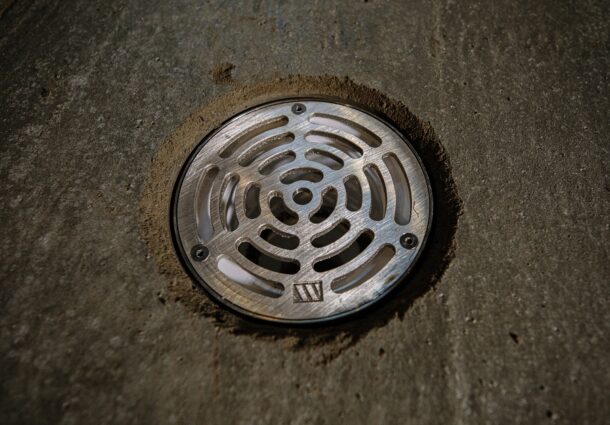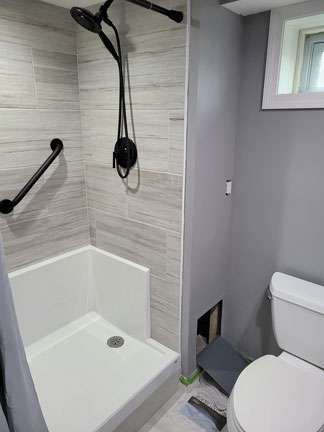A clean shower drain is essential for keeping your bathroom running smoothly. Over time, soap scum, hair, and other debris can build up on the drain cover, leading to a clogged shower drain. When a drain becomes clogged, water can back up, leaving you with a mess and an unpleasant experience.
Luckily, cleaning your shower drain cover regularly is a simple task that can prevent clogs and keep your bathroom in tip-top shape.
Why It’s Important to Clean Your Shower Drain Cover
Keeping your shower drain cover clean helps prevent clogs and ensures that your shower drains water efficiently. If you neglect cleaning the drain cover, hair and soap residue can build up, causing the water to flow slowly or not drain at all. This can lead to larger plumbing issues, including the need for expensive repairs. Regular cleaning not only helps avoid these issues but also extends the life of your plumbing.

Materials Need for Cleaning Your Drain Cover
Gather the necessary tools to make the cleaning process easier and more effective. You’ll need a screwdriver for unscrewing the drain cover, rubber gloves, a small brush, baking soda, white vinegar, a drain snake for tougher clogs, a bucket or container to catch debris, and a cloth or rag for wiping down the cover.
How to Effectively Clean Your Shower Drain Cover and Prevent Clogs
Cleaning your shower drain cover is a simple yet important task to avoid clogs and ensure smooth water flow. Regular maintenance can help keep your shower functioning properly, prevent backups, and save you from costly plumbing repairs. Follow these steps to clean the cover and maintain a clog-free shower drain:
Removing the Drain Cover for Cleaning
Begin by removing the drain cover carefully. Depending on the type of cover, you may need a screwdriver to unscrew it, or you can simply lift it off if it’s the non-screwed variety. Place the cover in a safe spot to avoid damaging it during the process.

Clearing Visible Debris and Build-Up
After removing the drain cover, inspect the area for visible debris, including hair, soap scum, or grime. Wear rubber gloves to protect your hands and pull out any debris you can reach. Use a small brush, like an old toothbrush, to scrub off any stubborn build-up on the drain and the cover itself.
Thoroughly Clean the Drain Cover
Once the debris is removed, focus on cleaning the drain cover. Scrub it using warm, soapy water, and apply baking soda followed by vinegar to remove tough grime. Let the mixture sit for a few minutes, then scrub it well to ensure every corner is clean. Rinse thoroughly under warm water.
Cleaning the Drain Pipes for Future Prevention
While the cover is off, clean the drain pipes to avoid any future blockages. Use a brush to scrub the inside of the drain and remove soap scum, mold, or mildew. For deeper clogs, use a drain snake to clear out trapped debris and hair in the pipes, ensuring smooth water flow.
Reattaching the Cleaned Drain Cover
Once everything is clean, carefully reattach the drain cover. If screws were involved, tighten them without overtightening to avoid damage. Ensure the cover fits snugly and is properly aligned to prevent water from leaking through gaps and to ensure that your drain works efficiently.
Why It’s Important to Address a Clogged Shower Drain Quickly
Ignoring a clogged drain can lead to serious issues beyond just inconvenience. As the blockage worsens, it can cause water damage, promote mold growth, and create unpleasant odors in your bathroom. Over time, the problem may escalate, requiring professional plumbing services, which can be costly and time-consuming. For more detailed instructions, check out this blog on clogged shower drain by Rocklin Plumbing, which offers step-by-step techniques and expert advice on clearing blockages. Regularly cleaning and maintaining your shower drain cover is a simple way to avoid these complications and keep your shower functioning properly.
If your shower is having drainage issues, it’s important to address the problem quickly to prevent further complications. One effective method to clear the blockage is using a drain snake to remove hair and debris. If the snake doesn’t work, try pouring a mixture of baking soda and vinegar down the drain, letting it sit for 15 minutes, and then rinsing with hot water. These steps can often clear the blockage without needing professional help.

What Are the Signs of a Clogged Shower Drain
A clogged shower drain can be tricky to detect early, but some clear signs can help you identify the issue before it gets worse. Recognizing these signs early can save you from more serious plumbing problems and prevent the need for expensive repairs.
Keep an eye out for any unusual behavior in your shower to avoid a clogged drain. Here are a few signs to watch out for:
- Slow Drainage: If you notice that the water isn’t draining as quickly as usual, there might be a blockage somewhere.
- Unpleasant Odors: Standing water can lead to bad odors in your shower area. This might indicate that your drain is partially clogged.
- Gurgling Sounds: If you hear gurgling noises when you use the shower, it could be a sign that air is trapped in the pipes due to a clog.
- Water Backups: The most obvious sign of a clogged shower drain is when water starts to back up in the shower, possibly even overflowing.
Conclusion
Cleaning your shower drain cover regularly is a simple yet important task for maintaining a clean and functional bathroom. By following these steps, you can easily remove hair, soap scum, and other debris that could lead to a clogged shower drain.
Regular maintenance prevents clogs and ensures your shower works properly. Remember to clean the drain cover every 1 to 2 months, or more often if needed, to keep your bathroom in top shape and avoid costly plumbing repairs.




Join the conversation: